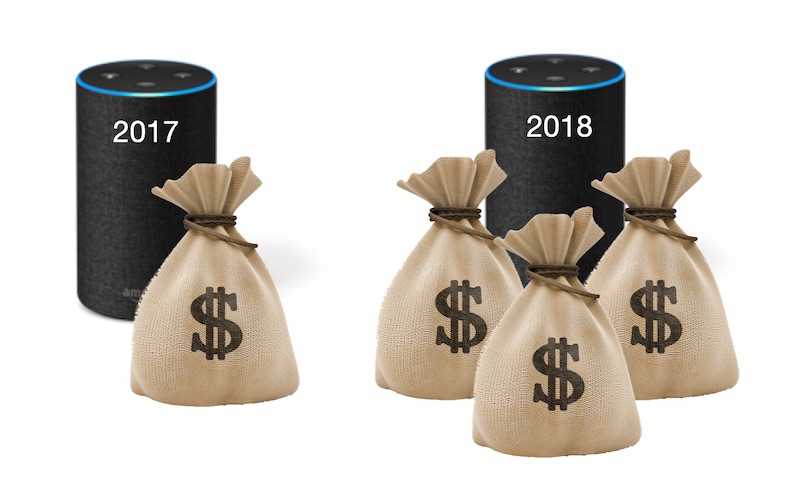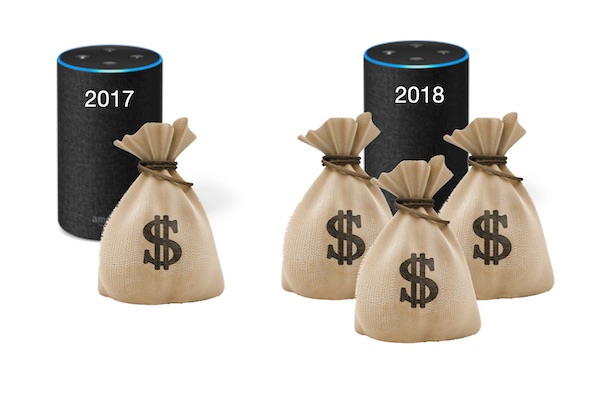Amazon Says Alexa Voice Shopping Tripled During 2018 Holiday Season

An easily overlooked comment in Amazon’s post-Christmas announcement about Amazon.com shopping and Echo smart speaker sales referred to voice commerce.
Customers use of Alexa for shopping more than tripled this year compared to last year.
Voice commerce is often heralded as the biggest potential revenue opportunity that justifies the enormous investment being made in voice assistants along with the subsidies for smart speakers. The open question is when and how that will occur. A much-hyped article in 2018 suggested only 2% of Amazon Echo users had made a purchase in 2018 using Alexa. The Information didn’t source the article other than suggesting someone had seen the figure in an internal Amazon report. Surveys in 2018 found that 17-33% of U.S. and European consumers volunteered that they had made a purchase using a voice assistant. This all matters because it offers guidance on what the baseline was for Amazon’s claim of tripled Alexa engagement for shopping.
The Many Flavors of Voice Shopping in 2019
In 2019, we are likely to see a more sophisticated view of voice shopping emerge. First, there is a difference between shopping and purchasing. The voice shopping process may include the transaction or the pre-purchase activities leading up to a transaction on any number of channels. Purchasing is the actual transaction and is more closely associated with voice commerce.
Second, there will be more discussion of different types of voice commerce. In-skill or in-voice-app purchasing for digital goods ranging from games to media will be one category. Another will be the purchase of consumer goods that require a physical shipment. The former is likely to grow more quickly, but the latter is a much larger total market and will get most of the attention.
More Voice Shoppers and a Higher Rate of Usage
The purchase of physical goods is where Amazon with its online properties and Whole Foods grocery division is believed to be in the optimal position for success. Google Express is the alternative through Google Assistant that relies on a network of national retailers and eventually expects to also include smaller businesses. Beyond these, there will be voice direct sellers that incorporate voice shopping into mobile apps and websites. All of these channels and buying stages will see more activity in 2019.
Voicebot data show that over 40 million U.S. adults had access to an Alexa-enabled device heading into the 2018 holiday season. If just 2% of them engaged in voice shopping then that would be over 850,000. Using Edison Research numbers for reordering or purchasing new products at 17%, we get seven million consumers shopping using Alexa. It’s a difference of nearly 10x. Keep in mind that Amazon said the number tripled, not the rate of users. The tripling figure includes new Alexa owners that did not have a device in 2017. Granted, Voicebot analysis suggests that in the first half of 2018, Amazon Alexa device ownership in the U.S. rose by only about 13%. That means the tripling of voice shopping included both more users and a higher rate of usage. You should expect to see more of this in 2019.
Follow @bretkinsella Follow @voicebotai
Over 1 in 5 Consumers Have Tried Voice Shopping and Most of it Was on Mobile









